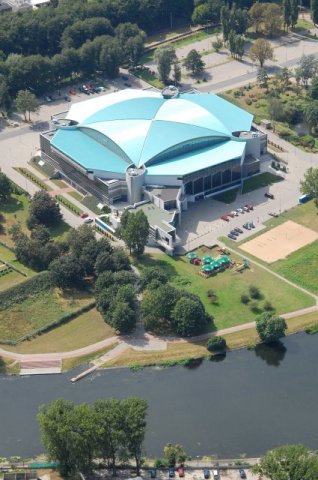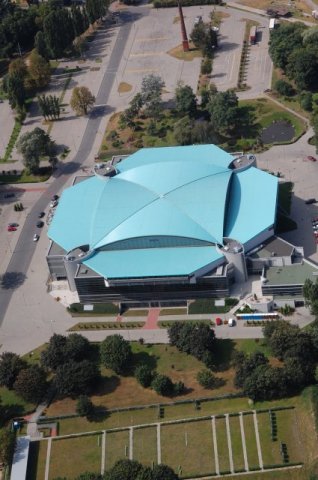Fire alarm systems
Fire alarm systems
Fire signaling systems or simply fire alarm systems are systems whose task is to detect a fire hazard, and then transfer information about the threat to the system's control elements, as well as inform about the threat to services and persons staying in the protected building.
Thanks to such coordinated operation of fire alarm systems, it is possible to efficiently prevent the spread of fire, react quickly and increase the chances of minimizing fire-related losses, as well as to protect the health and life of people in hazardous areas of the building.
Elements of the fire alarm system
All information and monitoring functions are performed by the fire alarm system control panel connected to the appropriate function modules. The control panel (CP) is the main computer of the system that collects and analyzes data collected by detection devices and on this basis performs programmed control and signaling operations.
Control Panel
Control Panels allow for free configuration of the system scenario in the event of a fire hazard. They are also equipped with diagnostic modules and panels with displays that allow for identification and handling of events. Control Panel exchanges are adapted to the number of modules and devices connected to them. The most developed are able to handle thousands of elements and controls, while the smallest central units are designed to support several elements.
Sirens
Beacons that emit acoustic and optical signals as well as acoustic-optical signals are another element of fire alarm systems. The sirens are activated when the system detects a fire. Another way of audible fire signaling is to connect the fire alarm system with the voice alarm system.
ROP manual call points
ROP are red buttons whose activation by the user immediately starts the fire alarm system. Their use and placement within the protected building are governed by design standards.
Monitoring and control modules
Fire alarm system modules monitor and control the operation of peripherals enabled within the signaling system. Monitoring and control modules can, among others:
- turn off dangerous and fire-spreading devices - e.g. electrical, heating or gas devices,
- bring elevators to the ground floor of the building,
- activate extinguishing devices,
- open smoke vents and aeration gates,
- close dampers and shut-off gates,
- open gates and emergency doors,
- provide information about the fire to the facility manager and fire brigade.
Fire detectors
Detectors are undoubtedly one of the most important components of fire alarm systems. They allow for efficient and effective detection of threats. The detectors should be selected on the basis of the architectural layout of the building, the conditions prevailing in it, temperature fluctuations, ventilation and heating systems, or the fire risk of the building.
There are several basic types of detectors used in fire alarm systems. These are: optical smoke detectors, ionization detectors, heat detectors, flame detectors, line detectors, multi-sensor detectors and suction detectors.
Optical smoke detectors detect visible smoke that is emitted in the first phase of a fire, and also allow you to quickly identify its source before the spread of open fire. Their principle of operation is to detect visible aerosols by registering a scattered ray.
Ionization detectors are also stimulated by the emitted smoke, however, their activation consists in reducing the air ionization current caused by smoke particles. This type of detector is not recommended for use in places that are exposed to changes in humidity, temperature and pressure.
Line detectors are constructed of a transmitter and a receiver as well as a mirror mounted on the other side of the protected area. They work on the principle of infrared beam emission and are excited when smoke or other products associated with the development of fire interfere with the path of the light beam between the receiver and the transmitter.
Heat detectors are activated by a sharp increase in temperature or exceeding its threshold value. They are less sensitive compared to optical detectors and work only when the fire develops.
Flame detectors detect infrared radiation emitted by a flame, and due to their operating principle they are used relatively rarely.
Suction detectors suck in air and analyze its composition. When they detect particles that occur during a fire, they stimulate.
Multi-sensor detectrors are a combination of several sensors in one device - e.g. optical and temperature.








